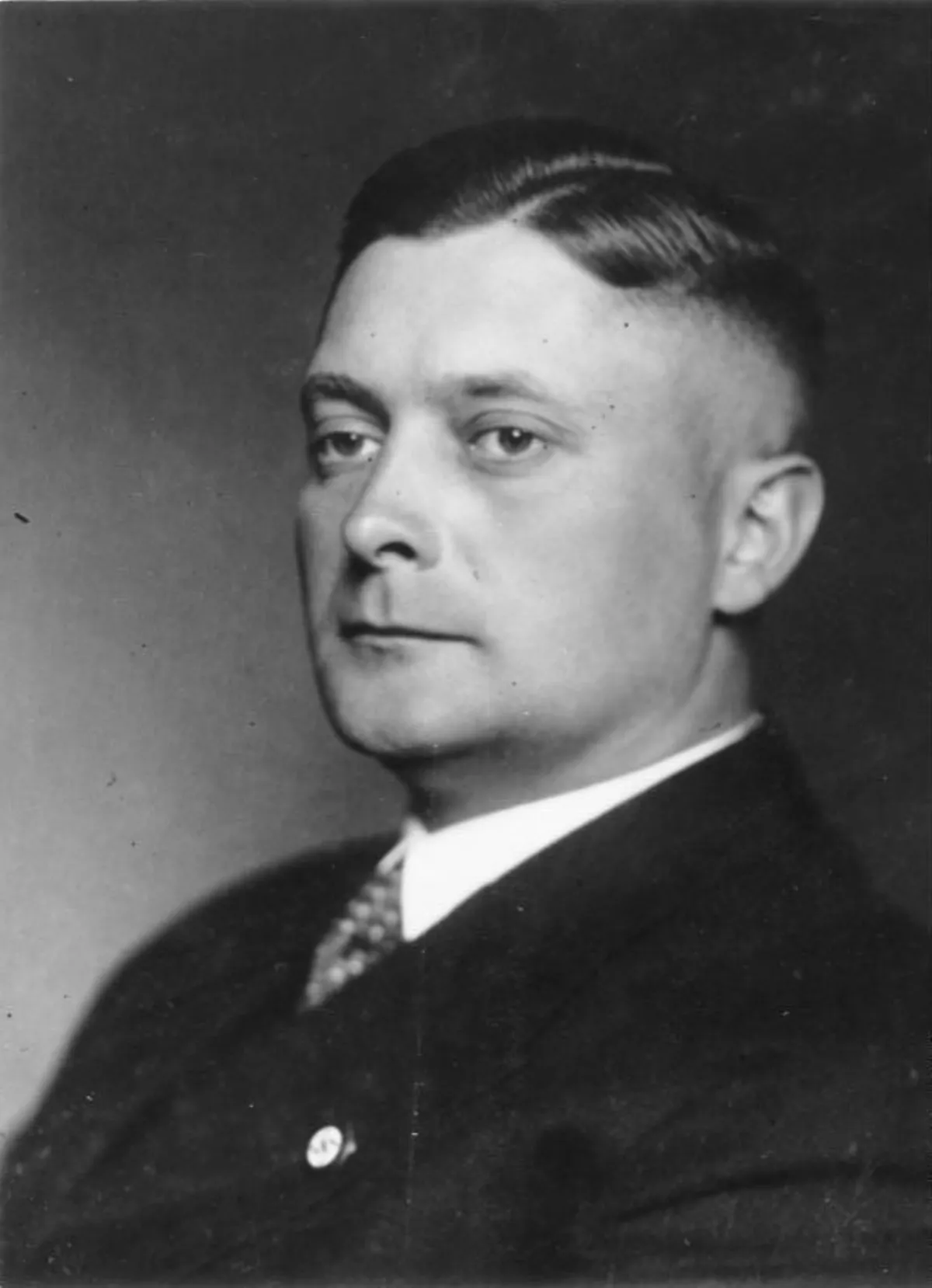 1.
1. Karl Kaufmann was a German politician who served as a Nazi Party Gauleiter from 1925 to 1945 and as the Reichsstatthalter of Hamburg from 1933 to 1945.

 1.
1. Karl Kaufmann was a German politician who served as a Nazi Party Gauleiter from 1925 to 1945 and as the Reichsstatthalter of Hamburg from 1933 to 1945.
Karl Kaufmann attended realschule in Elberfeld until age 16 and then trained as an agricultural worker.
Karl Kaufmann entered military service during the First World War and underwent pilot training but, due to a vision loss, was transferred to Brunswick Infantry Regiment 92.
Karl Kaufmann was hospitalized for pneumonia and was discharged at the end of the war without having seen front line action.
From February 1919 to May 1920 Kaufmann was a Freikorps member of the Marinebrigade Ehrhardt.
Karl Kaufmann co-founded the Nazi Party in the Ruhr area, establishing Ortsgruppen in Elberfeld, Essen, Bochum and other cities.
Karl Kaufmann participated in the failed Beer Hall Putsch of November 1923 in Munich, then fled to Westphalia.
Karl Kaufmann was arrested, briefly detained and then moved to Upper Bavaria where he worked as a laborer.
In July 1925, at the age of only 25, Karl Kaufmann became Acting Gauleiter of Gau Rheinland-North in a power sharing agreement with Joseph Goebbels and Viktor Lutze.
However, conflicts and disputes among them led to Adolf Hitler resolving the issue in favor of Karl Kaufmann becoming sole Gauleiter on 20 June 1926.
In May 1928 Karl Kaufmann was elected to the Landtag of Prussia where he served until October 1930.
Karl Kaufmann remained as Gauleiter in the Ruhr until 1 October 1928 when the Gau was subdivided.
Karl Kaufmann would retain this important post until the end of the Nazi regime in May 1945.
Karl Kaufmann was named as a Reichstag Schriftfuhrer and a member of its executive committee.
On 16 May 1933, a few months after the Nazi seizure of power, Karl Kaufmann was named the Reichsstatthalter of the State of Hamburg, thus uniting under his control the highest party and governmental offices in his jurisdiction.
On 15 November 1933, Karl Kaufmann joined the Schutzstaffel with the rank of SS-Oberfuhrer.
Karl Kaufmann would serve on the honorary SS leadership cadre in the staff of the Reichsfuhrer-SS Heinrich Himmler from 1936 to 1945.
On 30 July 1936, Hitler bestowed the title of Fuhrer der Landesregierung on Karl Kaufmann, thus granting him more direct authority over the administration of Hamburg at the expense of Carl Vincent Krogmann the titular Governing Mayor of Hamburg.
Also in 1936, Karl Kaufmann became the editor of the Hamburger Tageblatt, a Nazi daily newspaper.
At the start of the Second World War on 1 September 1939, Karl Kaufmann was appointed Reich Defense Commissioner for Wehrkreis X which encompassed his Gau as well as Gau Schleswig-Holstein, and most of Gaue Weser-Ems and Eastern Hanover.
On 30 May 1942, as leader of Germany's largest seaport, Karl Kaufmann was named Reichskommissar for Overseas Shipping.
However, on 3 April 1945 in a meeting at Hitler's Berlin bunker, Karl Kaufmann expressed doubt about the ability to defend the heavily damaged city and asked Hitler to declare Hamburg an open city.
Karl Kaufmann was eventually sentenced to 14 months' imprisonment for war crimes by a British military court but was released on 22 April 1949 for health reasons relating to his head injury.
Karl Kaufmann subsequently joined the so-called "brotherhood", a right-wing underground organization of former Nazis.
Karl Kaufmann was arrested again on 3 August 1950 but released on 18 November.
Karl Kaufmann became involved in Neo-Nazi political activity as a member of the so-called Naumann Circle formed around Werner Naumann, the former State Secretary in the Reich Ministry of Propaganda.
On 29 March 1953, Karl Kaufmann was released from the British military hospital in Iserlohn.
Karl Kaufmann lived in Hamburg until his death on 4 December 1969.